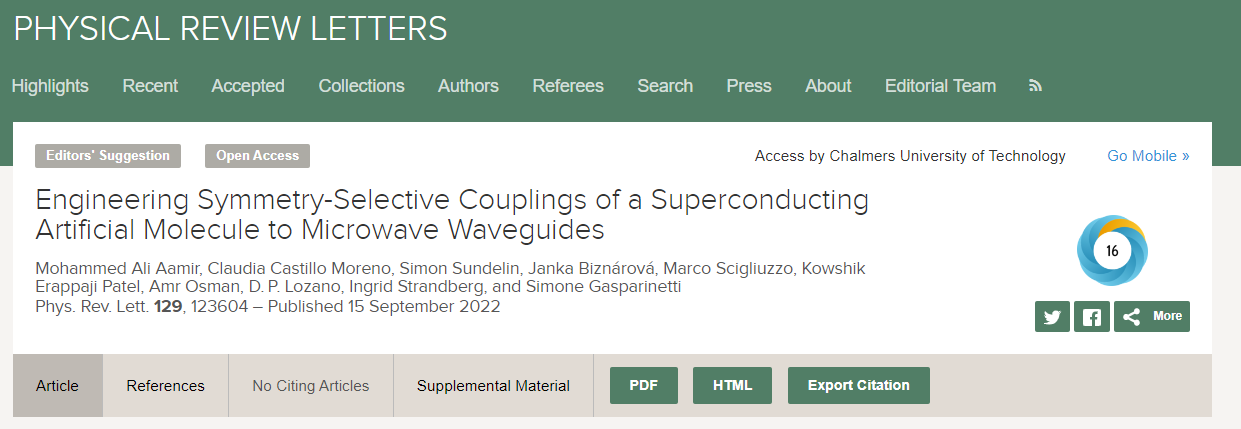Our new publication in PRL as Editor’s suggestion: Waveguides engineered based on the symmetries of an artificial molecule
Publication Research highlight September 15, 2022

Our preprint has finally been published in Physical Review Letters as Editor’s suggestion, titled, “Engineering symmetry-selective couplings of a superconducting artificial molecule to microwave waveguides”.
Link: https://journals.aps.org/prl/abstract/10.1103/PhysRevLett.129.123604
Authors: Mohammed Ali Aamir, Claudia Castillo Moreno, Simon Sundelin, Janka Biznárová, Marco Scigliuzzo, Kowshik Erappaji Patel, Amr Osman, D. P. Lozano, Ingrid Strandberg and Simone Gasparinetti
The essence of this work is to take full advantage of symmetries available in light-matter interactions. Symmetry plays a particularly significant role in the context of waveguide quantum electrodynamics, which is the study of interactions between quantum emitters and photonic mode continuum in waveguides. When multiple emitters are resonant, their composite wavefunction is either symmetric or anti-symmetric (i.e. undergo a sign change) under permutations of emitters. As a result, they are either bright or dark states – because they emit either strongly or weakly into the waveguide respectively. Both are interesting and useful, especially dark states which are protected by symmetry against decoherence and are, thus, attractive candidates for quantum information processing and quantum memories. Not surprisingly, dark states are challenging to control or detect and only a few experimental works address them.
In this work, we present a unique architecture where one waveguide is engineered to be associated selectively to each one of the two symmetries in a system of two resonant emitters. In other words, each state is a dark state to one waveguide but a bright state to the other waveguide. More generally, considering the multi-level nature of the emitters, the transitions between collective states of the same symmetry are coupled to “symmetry-preserving” waveguide whereas transitions between opposite symmetry are coupled to “symmetry-inverting” waveguide. Our emitter is an artificial atom realized with a superconducting transmon, whereas the waveguides are microwave coplanar waveguides. We provide a quantitative analysis of how symmetry-selective the waveguides are engineered to be. In addition, we demonstrate two distinct applications with our scheme. In one of them, we couple a symmetric state to an anti-symmetric state using a two-photon Raman process. We show this is an efficient mechanism of coherent population transfer between the two states reaching about 95% efficiency, while also acting as a frequency converter across two waveguides. In the other experiment, we show a remarkably simple scheme to generate maximally entangled photonic modes propagating in two different waveguides, which is an important application in the context of distributed quantum information processing. Our experiments allure to other applications that are amenable to this architecture. We have discussed possible applications to photodetection, photon-photon gates across separate waveguides, and even a quantum thermal machine for studies in quantum thermodynamics.

